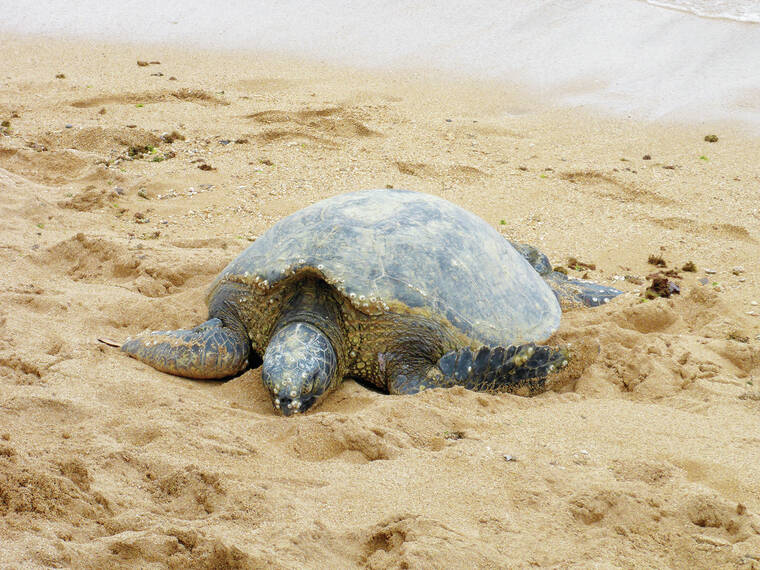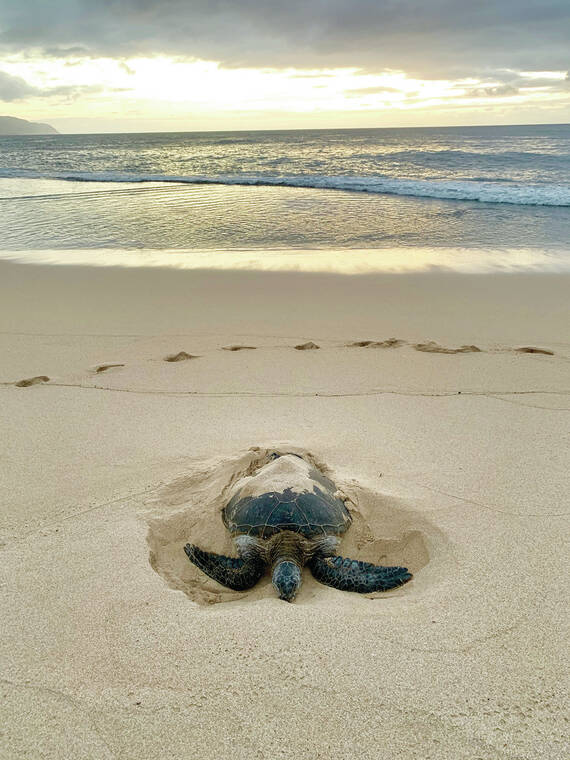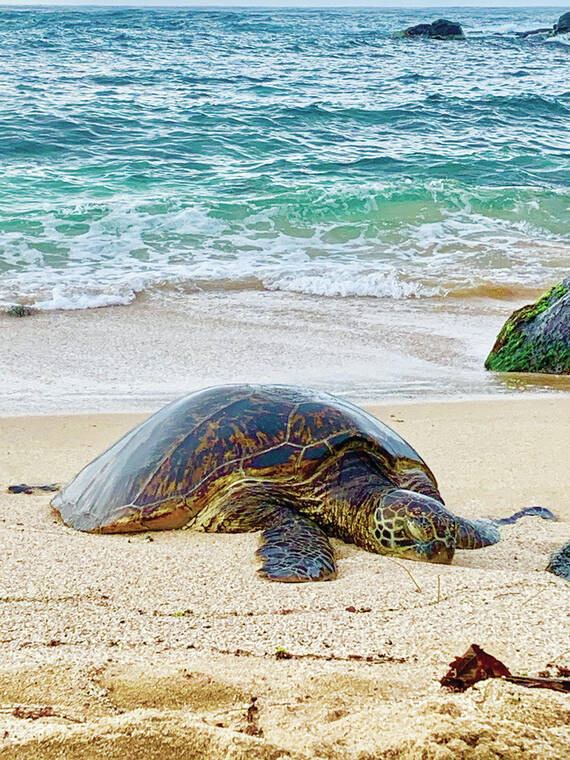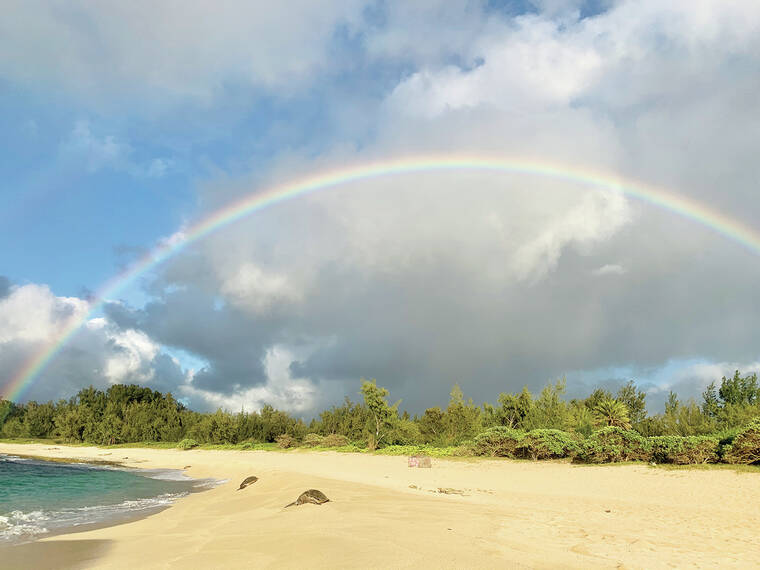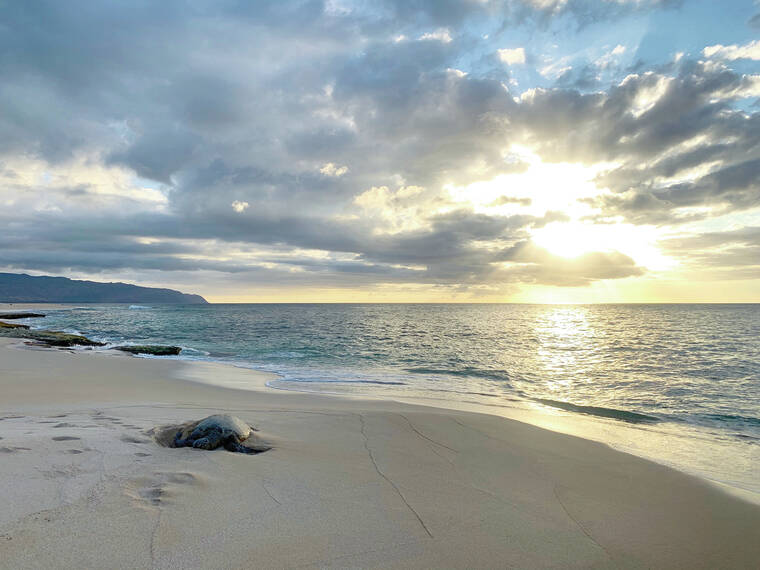HONOLULU — Federal and state agencies are asking the public to lookout for honu (Hawaiian green sea turtles) and honu‘ea (Hawaiian hawksbill turtles), and olive Ridley turtles during the 2022 sea turtle nesting season, which began this month.
The public can help by reporting honu that are nesting along beaches of Hawai‘i.
Honu and honu‘ea nest on Hawai‘i beaches from mid-April through September. However, nesting can extend into December.
The public can help ensure that they successfully lay their eggs by keeping a respectful distance of at least 10 feet from honu and their nests. The public can also help honu by reporting nesting activities to the National Oceanic and Atmospheric Administration’s Fisheries Marine Wildlife Hotline at 1-888-256-9840.
“The most important thing we can do for honu is give them space,” said Dr. Sheldon Plentovich, U.S. Fish and Wildlife Service coastal program coordinator.
“Most honu nest at night and are easily disturbed by lights, including flashlights, cell phones (e.g., flash photography), bonfires and flood light from houses. Any bright lights can disorientate nesting females and hatchlings. While we don’t know how many honu will nest along Hawai‘i beaches this year, both state and federal agencies are working together with our community volunteers to locate and monitor them.”
Honu are known to use beaches statewide, but nest mostly on Lalo/French Frigate Shoals in Papahanaumokuakea Marine National Monument. Honu‘ea nest primarily on the islands of Hawai‘i, Maui and Moloka‘i. Olive Ridley nests have been found on the islands of Hawai‘i, Maui and O‘ahu, but are extremely rare.
Honu both nest and bask on Hawai‘i’s beaches, so it is important to distinguish between these two activities if reporting nesting activities.
Nesting
• Honu typically lay their nest at night near or under coastal vegetation, and well above the high tide line;
• Honu digging with their rear flippers after “throwing” sand with their front flippers is likely an indicator of nesting activity.
Basking
• Basking honu are usually found closer to the water (near the high tide line) both during the day and at night;
• Honu do move sand with their front flippers when basking.
Everyone in Hawai‘i can protect honu. Anyone who sees honu on the beach, in the water, or observes any suspected nesting activity, please remember to:
• View honu from a distance of more than 10 feet. Do not touch, feed or chase them;
• Not harass or disrupt honu or their nests. Anyone doing so may incur hefty fines;
• Avoid blocking their access to or from the ocean;
• Avoid driving off-road vehicles on beaches that can crush nests, create tire ruts that trap hatchlings and degrade habitats. Driving on the beach is also illegal in most areas;
• Report illegal beach driving to the Kaua‘i Police Department or state Department of Land and Natural Resources Enforcement Hotline: 808-643-DLNR or the DLNRTip app;
• Avoid shining bright lights near sea turtles or on nesting beaches after dusk (such as flash photography, cell phone screen lights, flashlights, vehicle lights, exterior building lights, beach fires, etc.). Light pollution can disorient adult and hatchling honu, leading them to wander inland, into vegetation or roads, and away from the ocean;
• Ensure fishing line or rubbish is disposed of properly so sea turtles and their hatchlings do not become entangled. E no‘ono‘o pono and help keep our reefs and beaches clean;
• Keep dogs leashed to avoid disturbance to honu and other marine wildlife;
• Report suspecting nesting activities to the NOAA Fisheries Marine Wildlife Hotline, 1-888-256-9840.
Anyone who suspects they may live near a nesting beach should contact the Pacific Islands Fish and Wildlife Office at 808-792-9400 and request information on “turtle friendly lighting.”
